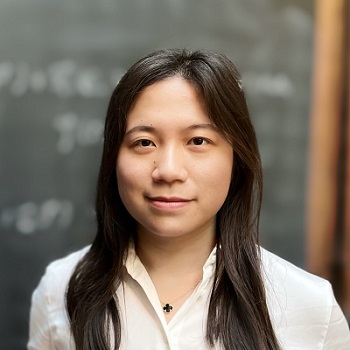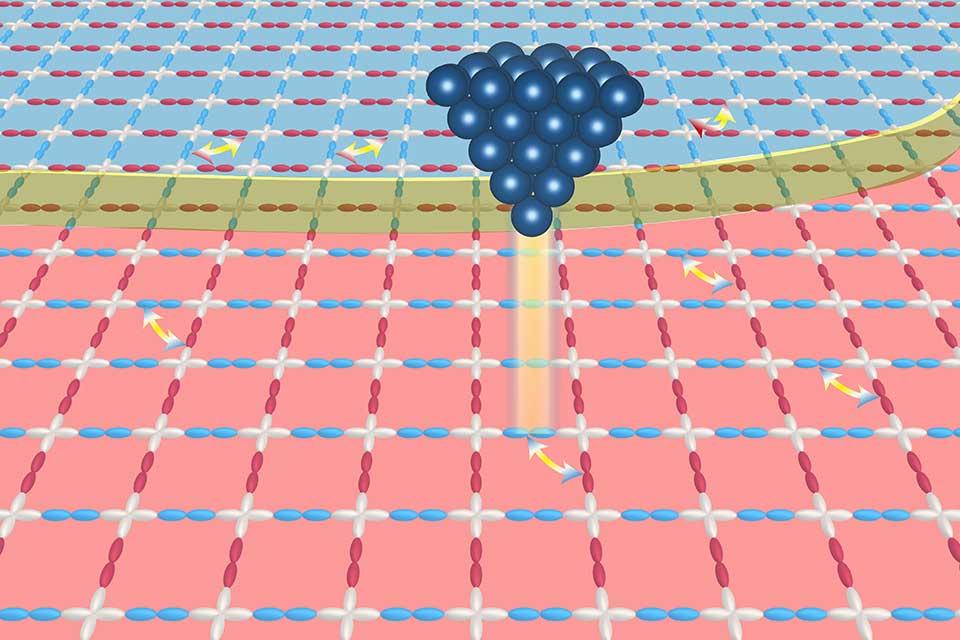The Macroscopic Quantum Matter Group at the University of Oxford has made a significant discovery, identifying and visualising a new phase of matter in high-temperature superconductors. The group developed and used a novel imaging technique – a high-energy spectroscopic imaging scanning tunnelling microscope (SISTM) – in their work and the specialist laboratory facilities in the Beecroft Building at the Department of Physics.
Identification of this long-predicted phase of matter in the copper based high-temperature superconductor systems for the first time provides new insights into why they become superconducting at high temperatures. As well as revealing new knowledge of nature, this understanding could lead practically to the development of more efficient, energy-saving technologies and potentially revolutionise industries like power transmission, transport, and electronic manufacturing by making them more cost-effective and sustainable. Ultimately, such advancements could contribute to reduced energy costs and more environmentally friendly technology solutions. The results have been published in Nature Materials.
At ambient pressure, copper-based (CuHTS) compounds are an important class of materials that are superconducting at liquid nitrogen temperatures. As recently demonstrated experimentally by the Macroscopic Quantum Matter Group at the University of Oxford, CuHTS is based on a charge-transfer insulator state generated by intra-orbital Coulombic interactions. In these systems, copper atoms display strong antiferromagnetic properties, meaning their magnetic elements align in opposite directions, a requirement for Cooper pairing and superconductivity. This magnetic behaviour is driven by interactions called superexchange, which occur between the spins of copper atoms when oxygen ions bridge the space between them.
Over the years, researchers have predicted and discovered various quantum states in the cuprates, including antiferromagnetism, d-wave superconductivity, and stripe phases. Intriguingly, one other essential state of matter, orbital order, has been long-predicted in CuHTS. However, no orbital ordering state has ever been experimentally detected, despite widespread evidence for electronic structure which does not possess rotational symmetry and would be its natural consequence. Specifically, theory within the three-orbital model for the CuO2 (the basic building block of CuHTS) charge-transfer insulator predicts that Coulomb interactions between the two planar oxygen atoms within the unit cell could lift an energy degeneracy at separate CuO2 oxygen sites, creating an orbitally ordered state.
‘Such effects should be identifiable as a splitting of the charge transfer band of two oxygen orbitals in the same CuO2 unit cell – now it becomes urgent to develop a new technique to directly probe the oxygen orbitals in the CuHTS,’ says project leader Dr Shuqiu Wang, a former postdoc in Professor J C Séamus Davis’s Oxford lab and now an Assistant Professor at the University of Bristol.
Pioneering technology leads to exciting discovery
The group developed a new imaging technique to visualise the new phase of matter.
‘Our new charge transfer energy imaging technique operating at high voltages directly probes the charge transfer bands at the high energies,’ explains Dr Niall Kennedy, formerly a PhD student at Professor J C Séamus Davis’s Cork lab and now a postdoc in Professor Davis’s Oxford lab. ‘This new technique opens up the potential to study how the bands affecting the quantum states in modern quantum matter. Because our microscopes are extremely sensitive to vibrational and acoustic noise, they are operated in ultra-low vibration laboratories 30 metres underground in the specially built, high-tech Beecroft Building at Oxford.’
Recently the group achieved the first nanoscale image of the charge transfer energy in the copper-based high-temperature superconductors (On the electron pairing mechanism of copper-oxide high temperature superconductivity, PNAS 119, 2207449119, 2022) using it to identify the electron-pairing mechanism. In this present work, the group improves these techniques to achieve atomic precision imaging of charge transfer energy inside each of the CuO2 building blocks. This enabled them to search for and directly visualise strong rotational symmetry breaking of charge transfer energy inside each individual CuO2 unit cell, with energy-level splitting between the two oxygen p-orbitals on the 50 meV scale. The team also mapped out two distinct domains where the oxygen orbitals are ordered differently.
Professor Davis concludes: ‘The mechanism of cuprate high temperature superconductivity has been clearly tested and demonstrated and this new technique also paves the way for the detection of new quantum states; it deepens our understanding of the quantum mechanics at the atomic scale. Technologically, these advances could lead to the development of materials capable of conducting electricity with zero resistance at higher temperatures than currently possible. This progress holds the potential to accelerate industries reliant on electrical conductivity, such as energy, transportation, and electronics, leading to more efficient power grids, faster maglev trains, and even alternatives for electric cars.’
Discovery of orbital ordering in Bi2Sr2CaCu2O8+x Wang et al, Nature Materials 23, 492-498 2024
The realities of research
How does a significant discovery come about? How does a breakthrough happen? What is it like to be a researcher? Dr Shuqiu Wang gives an insight...
 As is often the case, this particular breakthrough came about serendipitously. Our experimentalists were working on another project that identifies the pairing mechanism of the cuprate high-temperature superconductor when we suddenly noticed the rotational symmetry breaking in the charge transfer energy of the cuprates. This early discovery immediately caught our attention and prompted us – me, Dr Niall Kennedy and Professor J C Séamus Davis – to start to intensely research this avenue. It soon led to the rapid development of scientific ideas and algorithm creation.
As is often the case, this particular breakthrough came about serendipitously. Our experimentalists were working on another project that identifies the pairing mechanism of the cuprate high-temperature superconductor when we suddenly noticed the rotational symmetry breaking in the charge transfer energy of the cuprates. This early discovery immediately caught our attention and prompted us – me, Dr Niall Kennedy and Professor J C Séamus Davis – to start to intensely research this avenue. It soon led to the rapid development of scientific ideas and algorithm creation.
For iron-based superconductors, orbital ordering had already been proven and was critical to the superconducting state – this meant there was the potential to uncover the universality in their fundamental states in both the iron-based superconductors and cuprates which is what motivated us.
Several concepts presented in this particular paper originated during a workshop at the Kavli Institute for Theoretical Physics at the University of California, Santa Barbara. Discussing frontier science with world-leading physicists under the Californian sun during walks along the beach, were instrumental in sparking fresh ideas. And these ideas eventually lead to the success of this project.
While inspiration might have struck in part in California, the project was conceived and came to fruition in Oxford – more specifically, the Beecroft Building at the Department of Physics. Countless days and nights of intense and extensive scientific discussions took place involving both our group's experts but also world-leading physicists who were visiting Oxford.
The Beecroft Building's carefully designed light and airy open-plan layout played a crucial role in fostering collaboration; team members engaged in discussions at the blackboard pods would attract the interest of others passing by who would then join the conversation. Meanwhile, the highly specialist ultra-stable basement laboratories provided the necessary specialist infrastructure for the construction of our spectroscopic imaging scanning tunnelling microscopes.
What’s next?
This research and our new technique could lead to further understanding in the profound physics and the complex nature of these highly correlated, high temperature superconductors. We found an interesting correlation between the interstitial oxygen dopant ions and the orbitally ordered domains. This result hints towards these dopant ions driving the heterogenic disorder common in the cuprates, which is what we will be studying in the coming months.

